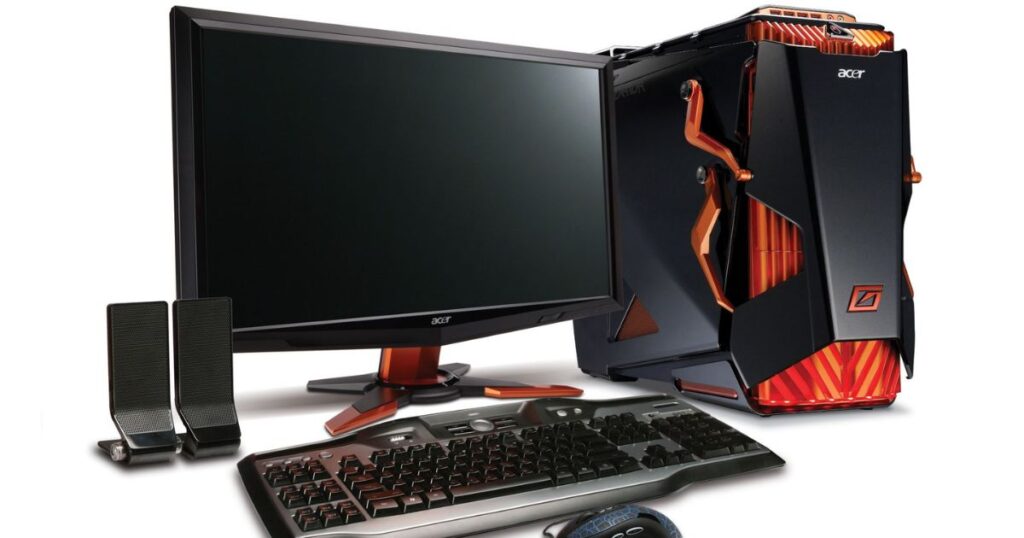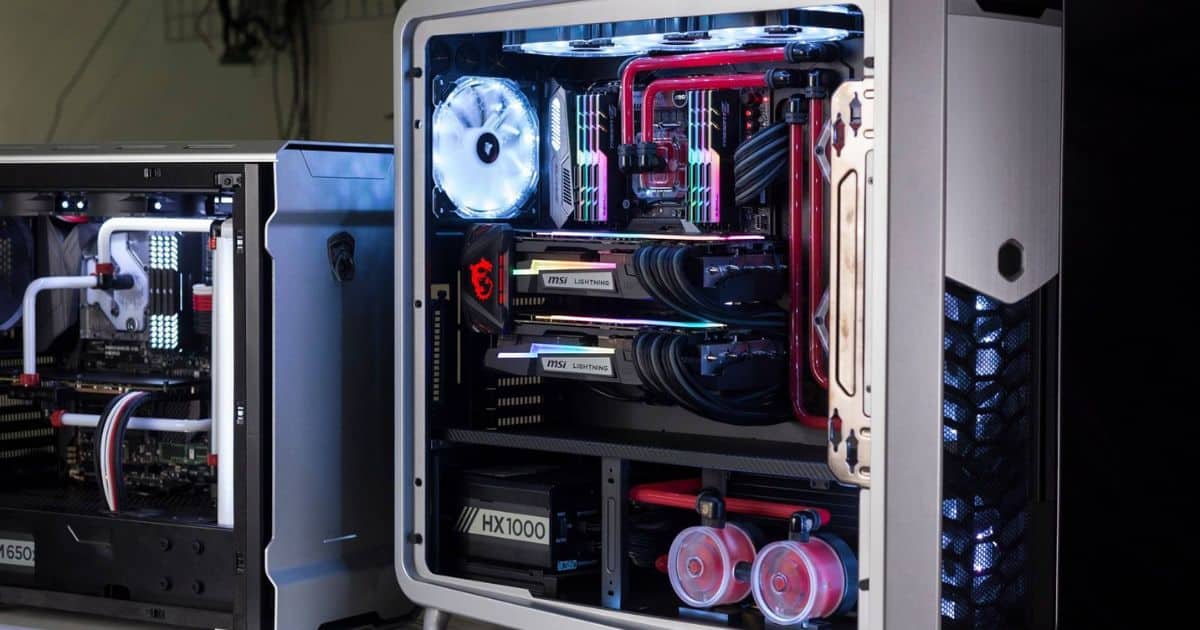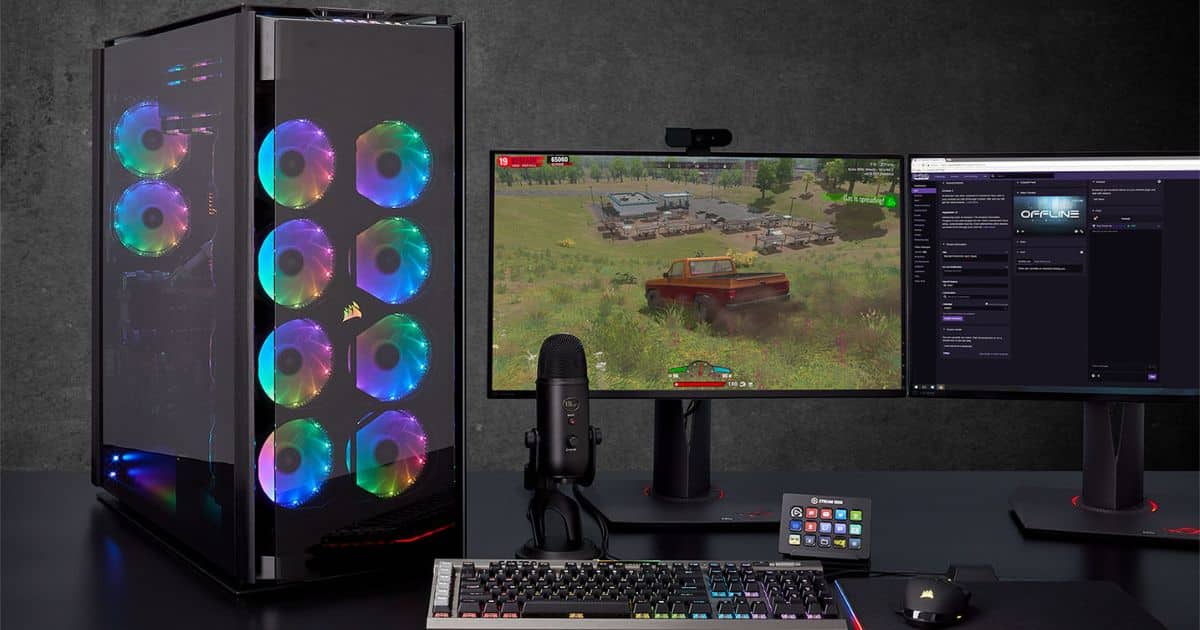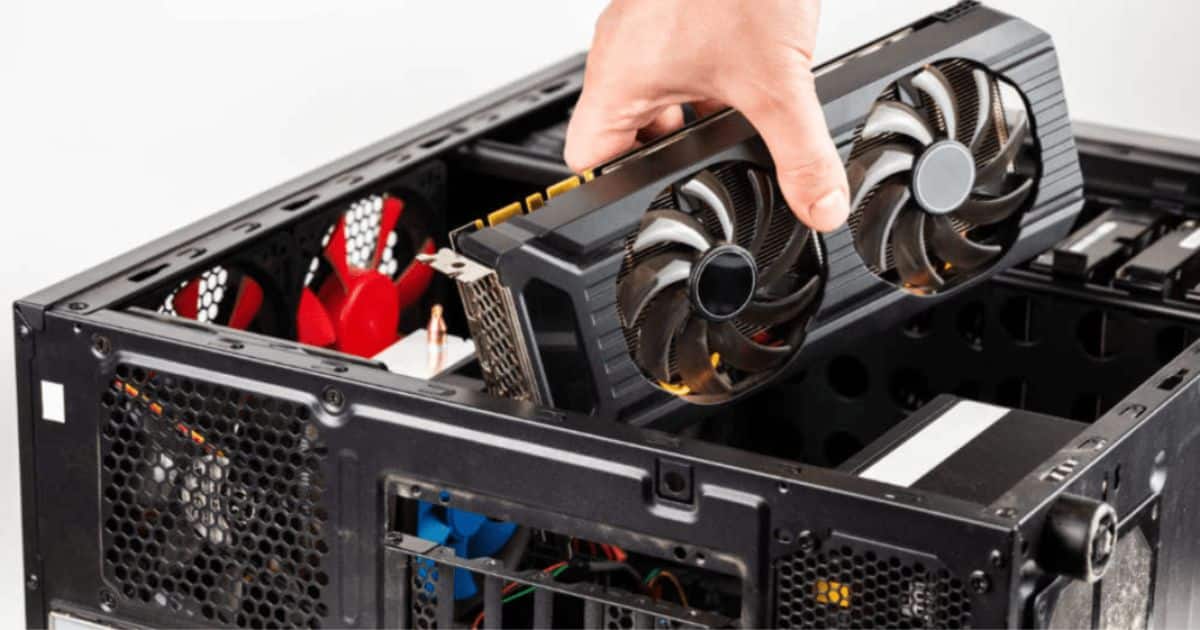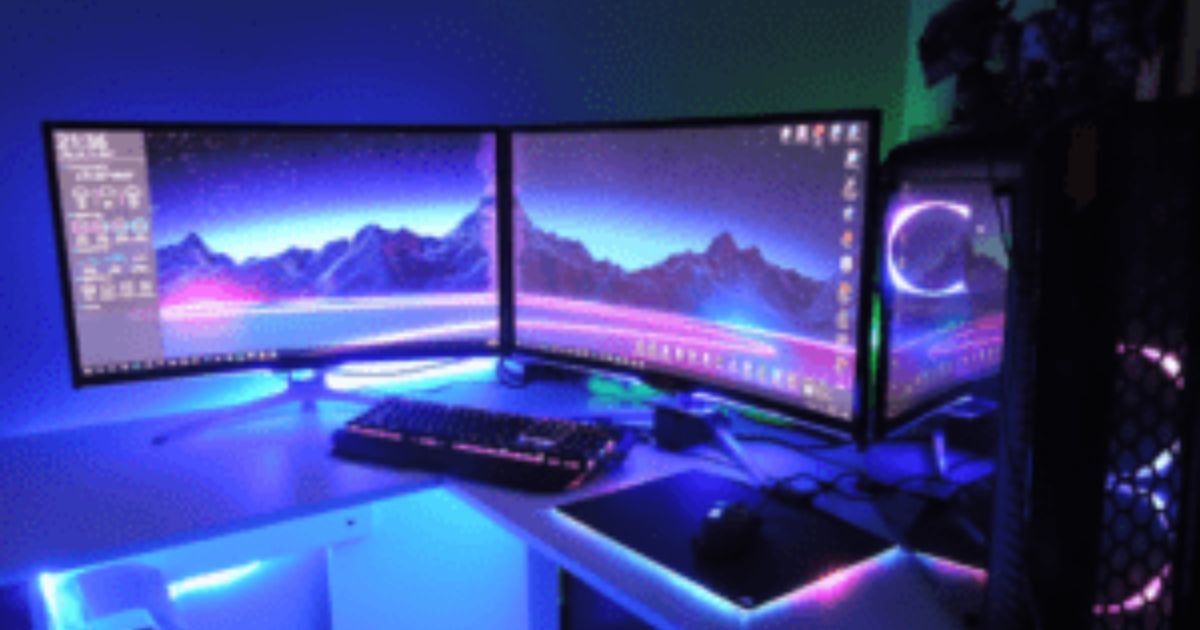The weight of a personal computer (PC) can vary significantly depending on its size, components, and materials used in construction. Generally, desktop computers tend to be heavier than laptops due to their larger form factor and additional hardware components. A typical desktop PC tower can weigh anywhere from 10 to 30 pounds or more, depending on factors such as the size of the case, the power supply, and the number of installed components such as hard drives, graphics cards, and cooling systems.
On the other hand, laptops are designed to be more lightweight and portable, making them much lighter than desktops. A standard laptop typically weighs between 2 to 8 pounds, although this can vary depending on factors such as screen size, battery capacity, and the inclusion of additional features like dedicated graphics cards or solid-state drives.
The weight of a PC is an important consideration for both consumers and manufacturers, impacting factors such as portability, ease of transportation, and the overall user experience. As technology advances, manufacturers continue to explore innovative ways to reduce the weight of PCs without compromising performance, durability, or functionality.
Understanding the Weight of PCs

Understanding the weight of PCs is essential for both consumers and manufacturers alike. It encompasses a range of factors, from the physical dimensions of the computer to the materials used in its construction. Desktop PCs, known for their versatility and power, typically weigh more than laptops due to their larger form factor and additional components.
Conversely, laptops are designed with portability in mind, resulting in lighter weights and sleeker profiles. Recognizing how weight influences the usability, portability, and overall user experience of PCs is crucial when selecting the right device for individual needs and preferences.
Moreover, understanding the trends in PC weight reduction, such as advancements in technology and the emergence of compact form factors, sheds light on the ongoing efforts to marry performance with convenience in the ever-evolving world of computing.
Factors Affecting Weight
The weight of a personal computer (PC) is influenced by various factors, including its form factor, size, and the materials used in its construction. Desktop PCs, for instance, tend to be heavier due to their larger size and the presence of additional hardware components such as power supplies, cooling systems, and multiple drives.
Desktop PCs: A Range of Weights
Desktop PCs can vary significantly in weight depending on their specifications and configurations. Entry-level desktop towers may weigh around 10 to 15 pounds, while high-end gaming rigs with robust cooling systems and multiple graphics cards can tip the scales at over 30 pounds. The weight of a desktop PC is also influenced by factors like the size and material of the case.
Laptops: Emphasizing Portability
In contrast to desktop PCs, laptops are designed to prioritize portability and mobility. As such, they are generally much lighter than desktops. Standard laptops typically weigh between 2 to 8 pounds, with ultraportable models weighing even less. The weight of a laptop is influenced by factors such as screen size, battery capacity, and the inclusion of additional features like touchscreens or dedicated graphics cards.
Importance of Weight in PC Design
The importance of weight in PC design cannot be overstated as it directly impacts portability, usability, and overall user experience. Lighter PCs, such as laptops and compact desktops, offer greater mobility and convenience, making them ideal for users who need to carry their devices frequently or work in dynamic environments.
On the other hand, heavier PCs, such as high-performance desktop towers, may sacrifice portability for enhanced features and expansion capabilities. However, it’s crucial for manufacturers to strike a balance between weight and functionality to ensure that PCs remain ergonomic and comfortable to use.
The weight of a PC can influence the choice of accessories, such as monitors and mounting solutions, to ensure stability and prevent strain on the user’s posture. Overall, considering weight in PC design is essential to meet the diverse needs of users while delivering optimal performance and usability.
Portability and Mobility
The weight of a PC plays a crucial role in determining its portability and ease of transportation. Lighter PCs, such as laptops and compact desktops, are more convenient for users who need to carry their computers frequently, whether for work, school, or travel. Heavy desktop towers, while less portable, may offer greater performance and expansion capabilities.
Ergonomics and User Experience
The weight of a PC can also impact ergonomics and user comfort, particularly for desktop setups. Heavier monitors and towers may require sturdier desks or mounting solutions to ensure stability and prevent strain on the user’s posture. Additionally, heavier laptops may be less comfortable to carry for extended periods, especially for individuals with mobility issues.
Trends in PC Weight Reduction
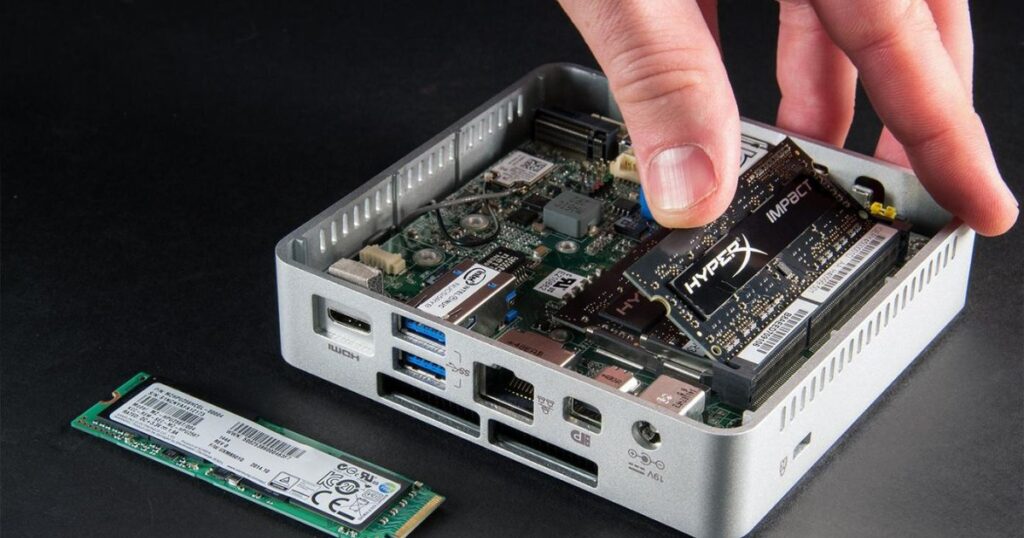
Trends in PC weight reduction are largely driven by advancements in technology and changing consumer preferences. Manufacturers are constantly striving to create lighter PCs without compromising performance or durability. One significant trend is the increasing use of lightweight materials such as aluminum, magnesium alloys, and carbon fiber in PC construction.
These materials offer strength and durability while keeping the overall weight of the device to a minimum. Additionally, component miniaturization and improved energy efficiency have contributed to reducing the size and weight of internal hardware components, including processors, memory modules, and storage drives.
This trend is particularly evident in the proliferation of ultraportable laptops and mini PCs, which offer impressive computing power in compact and lightweight form factors. As consumers increasingly prioritize portability and mobility, we can expect manufacturers to continue innovating in PC weight reduction to meet the evolving needs of users.
Advances in Technology

As technology continues to evolve, manufacturers are constantly seeking ways to reduce the weight of PCs without sacrificing performance or durability. This includes advancements in materials engineering, component miniaturization, and energy efficiency. Thinner and lighter laptops with longer battery life have become increasingly common, thanks to innovations in processor design and display technology.
Compact Form Factors
The rise of compact form factors such as mini PCs and all-in-one desktops has contributed to the trend of lighter PCs. These space-saving designs integrate components more efficiently, resulting in smaller and lighter systems without compromising performance. Mini PCs, in particular, offer a balance between portability and computing power, making them popular choices for home entertainment centers or small office setups.
Finding the Right Balance
When considering the weight of a PC, it’s essential to strike a balance between portability, performance, and usability. While lighter PCs offer greater mobility and convenience, heavier models may provide more robust features and expansion options.
Ultimately, the ideal weight of a PC depends on the user’s specific needs and preferences, as well as the intended use case. By understanding the factors influencing PC weight and staying informed about technological advancements, consumers can make well-informed decisions when selecting their next computer.
Customization and Personalization
Another factor influencing the weight of PCs is the level of customization and personalization. Custom-built desktop PCs often allow users to choose specific components tailored to their needs, which can affect the overall weight of the system.
For example, opting for a high-capacity power supply, multiple hard drives, or a larger graphics card may increase the weight of the desktop tower. Conversely, selecting lightweight materials for the case or opting for compact components can help reduce the overall weight without compromising performance.
Environmental Considerations
In recent years, there has been a growing emphasis on environmental sustainability in the design and manufacturing of electronic devices, including PCs. Lighter PCs can have a smaller carbon footprint compared to heavier counterparts, as they require less energy to manufacture, transport, and operate. Additionally, reducing the weight of PCs can lead to lower shipping costs and reduced packaging materials, further contributing to environmental conservation efforts.
Impact on Battery Life
In the case of laptops and other portable devices, weight can also affect battery life and overall energy efficiency. Lighter laptops typically feature smaller and lighter batteries, which may result in shorter battery life compared to heavier models with larger battery capacities. Manufacturers must strike a balance between weight, battery capacity, and performance to provide users with an optimal balance of portability and productivity.
Emerging Technologies
Advancements in materials science and manufacturing techniques continue to drive innovation in PC design, leading to lighter and more energy-efficient devices. For example, the use of lightweight yet durable materials such as carbon fiber, magnesium alloys, and aluminum alloys allows manufacturers to create thinner and lighter laptops without sacrificing durability or structural integrity.
Similarly, advancements in component miniaturization and power efficiency contribute to reducing the weight of desktop PCs while maintaining or even improving performance.
User Preferences and Market Trends
Ultimately, the weight of a PC is also influenced by user preferences and market trends. For instance, there is a growing demand for ultra-portable laptops and compact desktops among consumers who prioritize mobility and space-saving designs.
Manufacturers respond to these preferences by developing lighter and more portable PCs with sleek designs and advanced features. As technology continues to evolve and consumer demands evolve, we can expect to see further innovations in PC design aimed at reducing weight while enhancing performance, functionality, and sustainability.
Transportation and Mobility
The weight of a PC directly affects its ease of transportation and mobility. Lighter PCs, such as laptops and mini PCs, are more convenient for users who need to move their devices frequently, whether for work, school, or travel. Heavy desktop towers, on the other hand, may require additional effort and equipment for transport, such as sturdy carrying cases or dedicated transportation solutions.
Considerations such as weight and portability are particularly crucial for professionals who frequently commute or travel for business, as well as students who need to transport their computers between home and school.
Durability and Structural Integrity
While reducing weight is often desirable for improved portability, it’s essential to maintain durability and structural integrity. Lightweight materials used in PC construction should be chosen carefully to ensure that the device can withstand everyday wear and tear, as well as occasional bumps or impacts during transportation.
Manufacturers employ rigorous testing and quality control measures to ensure that lightweight PCs meet industry standards for durability and reliability. Additionally, features such as reinforced chassis, shock-absorbing materials, and protective coatings help enhance the durability of lightweight PCs without adding unnecessary bulk.
Health and Ergonomics
The weight of a PC can also impact user health and ergonomics, particularly for desktop setups. Heavy monitors and towers may require sturdy desks or mounting solutions to ensure stability and prevent accidents or injuries caused by tipping or falling equipment.
Heavier laptops may contribute to discomfort or strain when used for extended periods, leading to issues such as neck pain, shoulder strain, or wrist discomfort. Ergonomic design features such as adjustable stands, keyboard tilt, and wrist rests can help alleviate these issues and promote healthier computing habits.
Power Consumption and Efficiency
In addition to its physical weight, the power consumption and efficiency of a PC also impact its overall environmental footprint. Lightweight PCs that consume less power and generate less heat contribute to lower energy bills and reduced environmental impact. Energy-efficient components such as solid-state drives (SSDs), low-power processors, and LED displays help minimize power consumption while maximizing performance.
Manufacturers increasingly prioritize energy efficiency and sustainability in PC design, incorporating features such as power-saving modes, automatic shut-off timers, and eco-friendly materials to reduce the environmental impact of their products.
Future Directions
Looking ahead, the trend towards lighter, more energy-efficient PCs is likely to continue as technology evolves and consumer preferences shift. Emerging technologies such as quantum computing, neuromorphic computing, and advanced materials hold promise for further reducing the weight and environmental impact of PCs while unlocking new levels of performance and functionality.
As the demand for portable, sustainable computing solutions grows, manufacturers will continue to innovate and collaborate to create the next generation of lightweight PCs that meet the needs of users and the planet alike.
FAQ’s
How much does a typical PC weigh?
The weight of a typical desktop PC can vary widely depending on its size, components, and construction. However, a general range is between 10 to 30 pounds.
How much does an all-in-one PC weigh?
All-in-one PCs, which integrate the computer components and monitor into a single unit, generally weigh between 10 to 20 pounds. However, larger models with larger screens may weigh more.
What is the weight of a CPU?
The weight of a central processing unit (CPU), which is the main component of a computer responsible for executing instructions, is typically very light, usually only a few ounces. It’s a small chip that is installed onto the motherboard of a computer.
Conclusion
The weight of PCs varies depending on several factors such as their form factor, components, and construction materials. Desktop PCs typically range from 10 to 30 pounds, while all-in-one PCs weigh between 10 to 20 pounds. The CPU itself, being a small chip installed on the motherboard, is usually very light, only a few ounces. Beyond mere physical weight, considerations such as portability, durability, ergonomics, power consumption, and environmental impact play significant roles in PC design and user experience.
As technology advances, manufacturers continue to explore innovative ways to reduce the weight of PCs without compromising performance or functionality. This trend towards lighter, more energy-efficient computing solutions aligns with the growing demand for portable and sustainable devices.
Looking ahead, future developments in materials science, component miniaturization, and energy efficiency hold promise for further reducing the weight and environmental impact of PCs while unlocking new levels of performance and usability. By understanding the factors influencing PC weight and staying informed about technological advancements, consumers can make informed decisions when selecting PCs that best meet their needs and preferences.

Brook over 3 years of professional gaming, esports coaching, and gaming hardware reviews to provide insightful expertise across PC, console, and mobile gaming.
